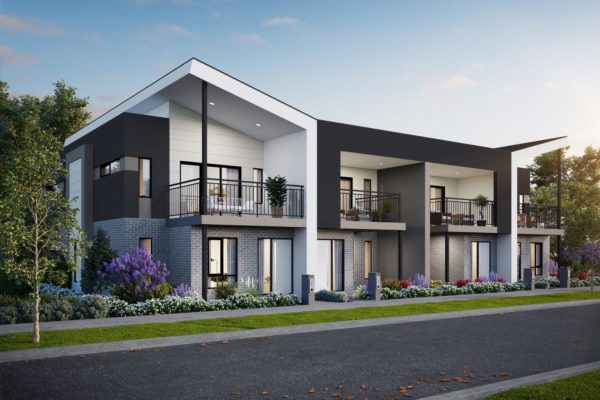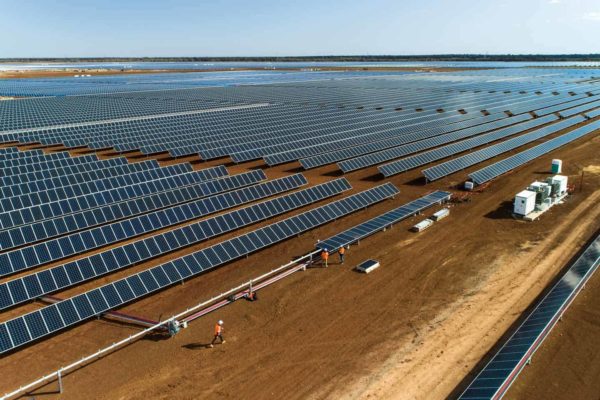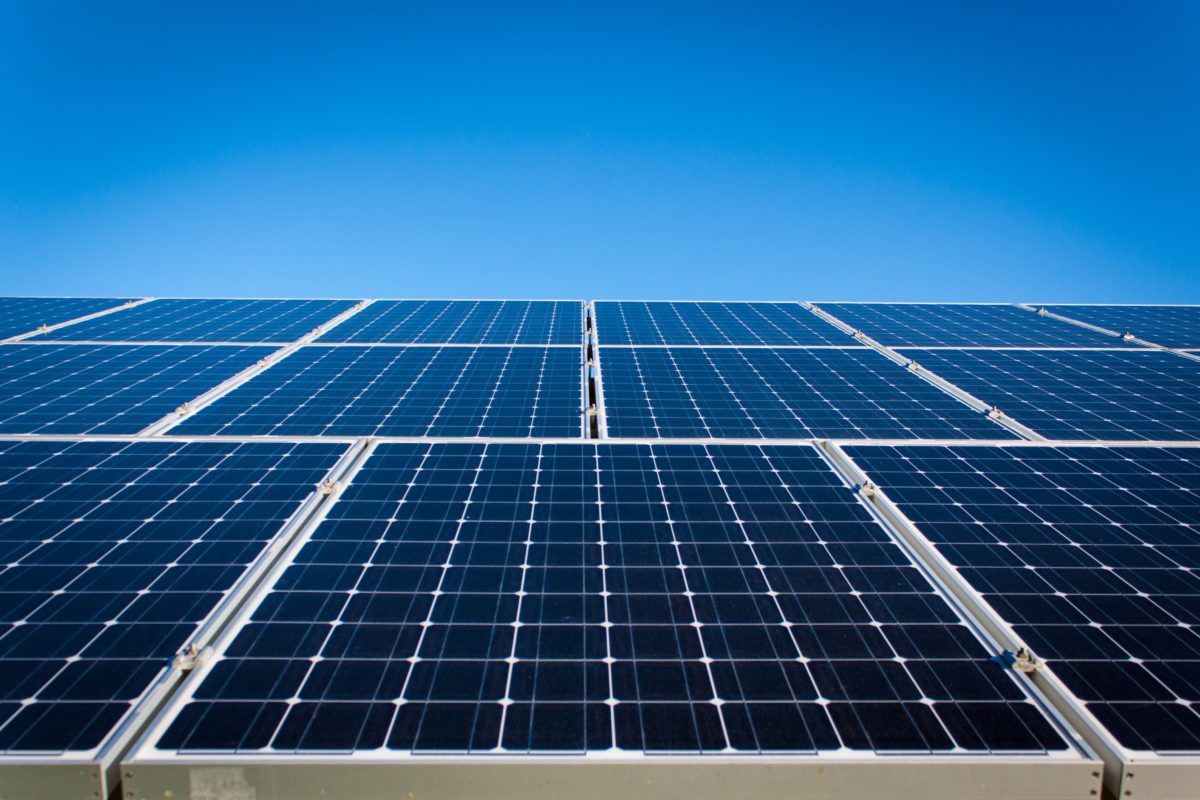EnergyAustralia has revealed plans to develop a 210 kW rooftop solar PV project coupled with a centralised 100 kW/270 kWh battery energy storage system as part of the Rathdowne residential housing estate being developed by Villawood Properties in the Melbourne suburb of Wollert.
The Solstice precinct will form part of the 1,100-home Rathdowne estate. It will comprise 36 townhouses and a large residents’ club which will store and share power generated by solar PV systems installed on their rooftops.
Four of the townhouses in the Solstice precinct will be fitted with 3 kW rooftop solar PV systems, 32 will have 4 kW solar arrays installed while a 70 kW solar system will be installed on the roof of the residents’ club.
The solar PV infrastructure will be supported by a 100 kW/ 270 kWh battery energy storage system (BESS) located at the residents’ club.
EnergyAustralia said the solar+storage system will be managed by an intelligent microgrid platform that controls the energy flow across the precinct. Any excess renewable energy generated within the microgrid that is not consumed by the townhouses will be fed back into the National Electricity Market (NEM).
Villawood Properties executive director Rory Costelloe said the microgrid, which has been endorsed by the Victorian government’s Department of Environment, Land, Water and Planning, has the potential to cut annual power bills in half.
Figures provided by Villawood suggest the annual power bill for those living in a townhouse in the Solstice precinct will total $892 while those in a standard townhouse will pay $1943 each year.
The savings estimates are based on a Solstice townhouse fitted with a 4 kW solar PV system generating 5.3 MWh of renewable energy each year coupled with battery storage, compared to a typical three-bedroom townhouse without solar consuming 6 MWh per annum.

Image: Villawood
“The microgrid, combining individual solar PV systems and a centralised battery together with smart home capabilities, is a game-changer that will help residents use energy much more efficiently and lower their bills by up to 50%,” Costelloe said.
EnergyAustralia chief customer officer Mark Brownfield said the project could provide a blueprint for low-cost, sustainable, residential energy.
“Our purpose at EnergyAustralia is to lead and accelerate the clean energy transformation for all, from small community projects to providing clean energy for the state,” he said.
“That’s what’s so exciting about the Solstice precinct microgrid at Wollert — it demonstrates what can be done at a local level.
“The technology helps residents become self-sufficient, gives them control over their energy use, reduces their bills as well as their carbon emissions.
“We believe what we’re doing in Wollert is the start of more community energy solutions being rolled out across Australia.”
EnergyAustralia, which has approximately 2.5 million customers in the NEM, owns and operates a multi-billion-dollar energy generation portfolio across Australia.

Image: Neoen
The gen-tailer has considerably broadened its generation sources in recent years, with investments in wind and solar totalling more than $3 billion and 1000 MW of capacity. Its portfolio includes power purchase agreements with Coleambally, Ross River, Manildra and Gannawarra solar farms.
In addition, the retailer has plans to replace the Yallourn coal-fired power station in Victoria’s Latrobe Valley with a four-hour 350 MW capacity big battery. The battery is expected to be delivered by 2026. EnergyAustralia already operates two utility-scale battery storage systems – the stand-alone Ballarat terminal station and co-located Gannawarra solar farm battery assets that represent combined storage of 80 MWh.
Construction of the Solstice precinct is expected to commence late in 2021 with the first residents to move in next year.
“The microgrid will really come into its own once all the townhouses and the clubhouse are finished,” Costelloe said.
“Early next year we are hoping to have proven the power and financial benefits.”
The Solstice microgrid project has secured the support of the state government’s Microgrid Demonstration Initiative which is designed to support the development and implementation of microgrid demonstration projects in Victoria.
This content is protected by copyright and may not be reused. If you want to cooperate with us and would like to reuse some of our content, please contact: editors@pv-magazine.com.









1 comment
By submitting this form you agree to pv magazine using your data for the purposes of publishing your comment.
Your personal data will only be disclosed or otherwise transmitted to third parties for the purposes of spam filtering or if this is necessary for technical maintenance of the website. Any other transfer to third parties will not take place unless this is justified on the basis of applicable data protection regulations or if pv magazine is legally obliged to do so.
You may revoke this consent at any time with effect for the future, in which case your personal data will be deleted immediately. Otherwise, your data will be deleted if pv magazine has processed your request or the purpose of data storage is fulfilled.
Further information on data privacy can be found in our Data Protection Policy.